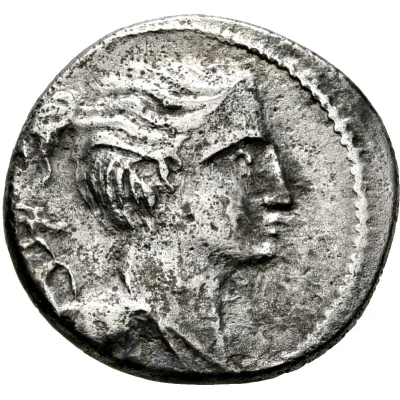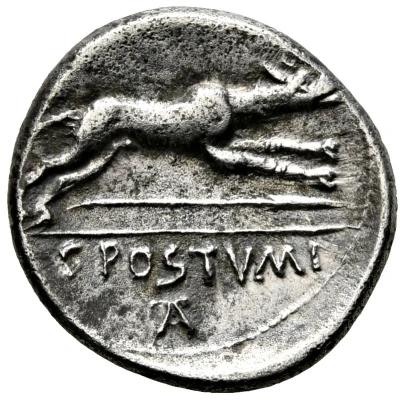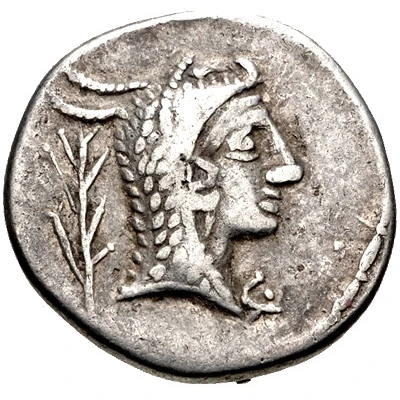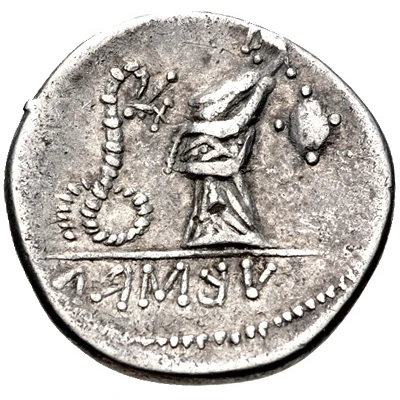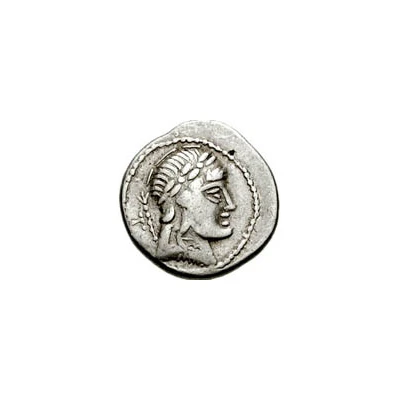
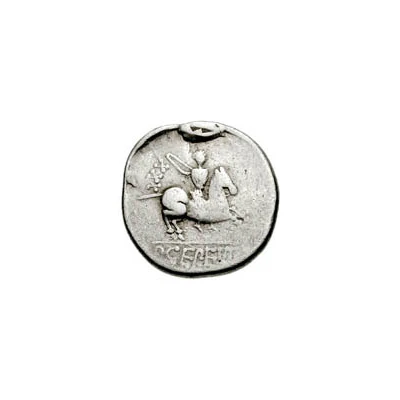

Obverse © Classical Numismatic Group, Inc. – Reverse © Coin Invest
Denarius 65 BC - 50 BC
| Silver | 3.43 g | - |
| Issuer | Eravisci (Central and Eastern European Celts) |
|---|---|
| Type | Standard circulation coin |
| Years | 65 BC - 50 BC |
| Value | 1 Denarius |
| Currency | Denarius |
| Composition | Silver |
| Weight | 3.43 g |
| Shape | Round (irregular) |
| Technique | Hammered |
| Demonetized | Yes |
| Updated | 2024-10-09 |
| Numista | N#225554 |
|---|---|
| Rarity index | 95% |
Reverse
Horseman right.
Lettering: XXX
Comment
Imitating a Roman Republic denarius of P. Crepusius (Crawford 361)Quantities of Roman Republic denarii have been found in Balkan deposits, some with the tribal name of the Eraviscii. The prototypes of these denarii all date in the 80s and 70s BC. The implication is that there was a vast influx of Roman silver into the Balkans in the 70s and 60s BC. Crawford, in Coinage & Money Under the Roman Republic, attributes this influx to the expansion of the slave trade into the Balkans at this period. The east had been pacified by Pompey, eliminating the principal source of slaves, and incursions into Gaul had not yet begun in earnest, leaving the Balkans to supply a new source of manpower.
Interesting fact
One interesting fact about this coin is that it features a unique blend of Celtic and Roman design elements. The obverse (front) side of the coin depicts a stylized head of the Roman goddess Roma, while the reverse (back) side features a characteristic Celtic motif of a stylized animal, in this case, a horse. This blending of design elements reflects the cultural exchange and influence that occurred between the Roman Empire and the Celts during this time period.
